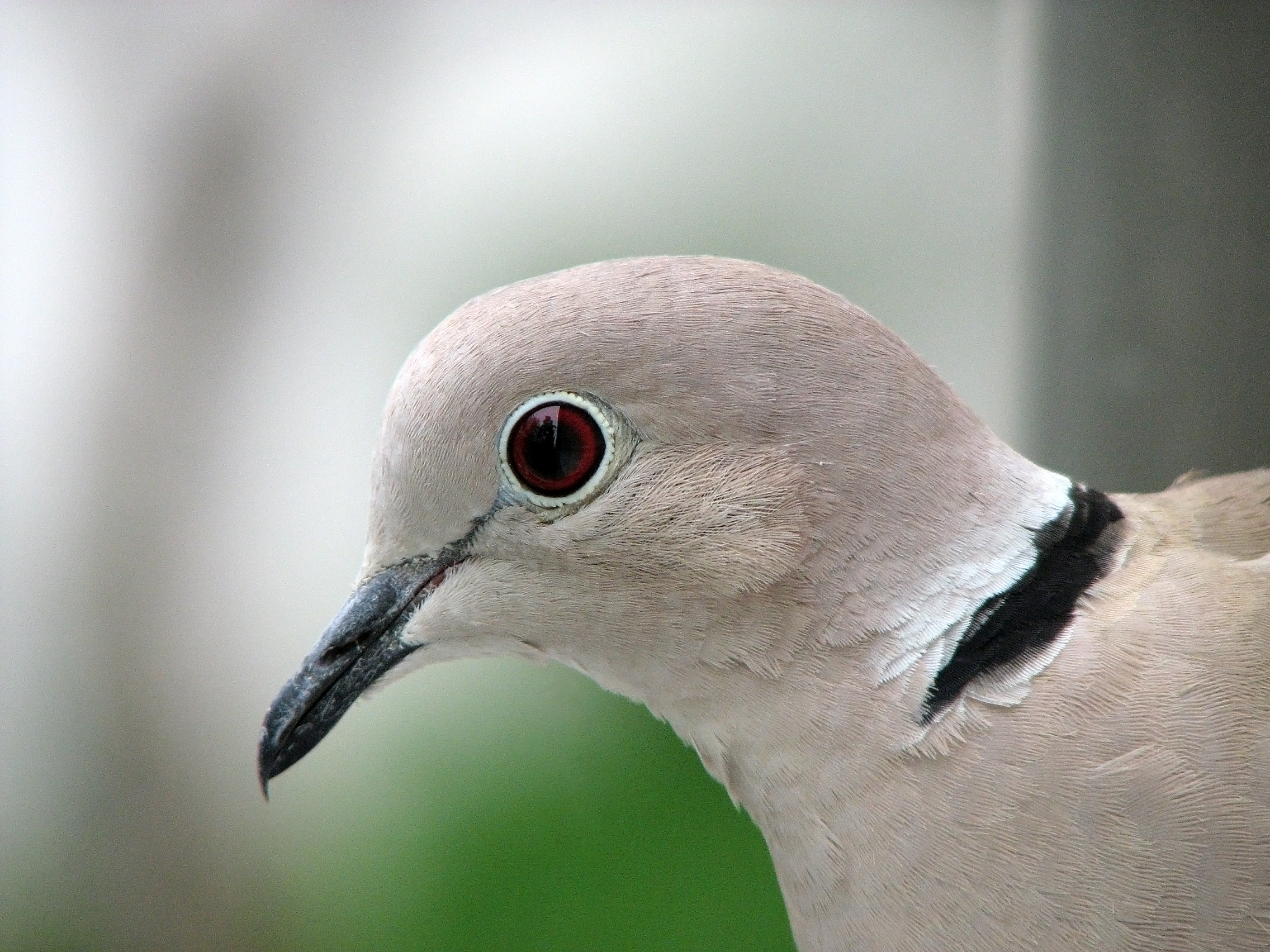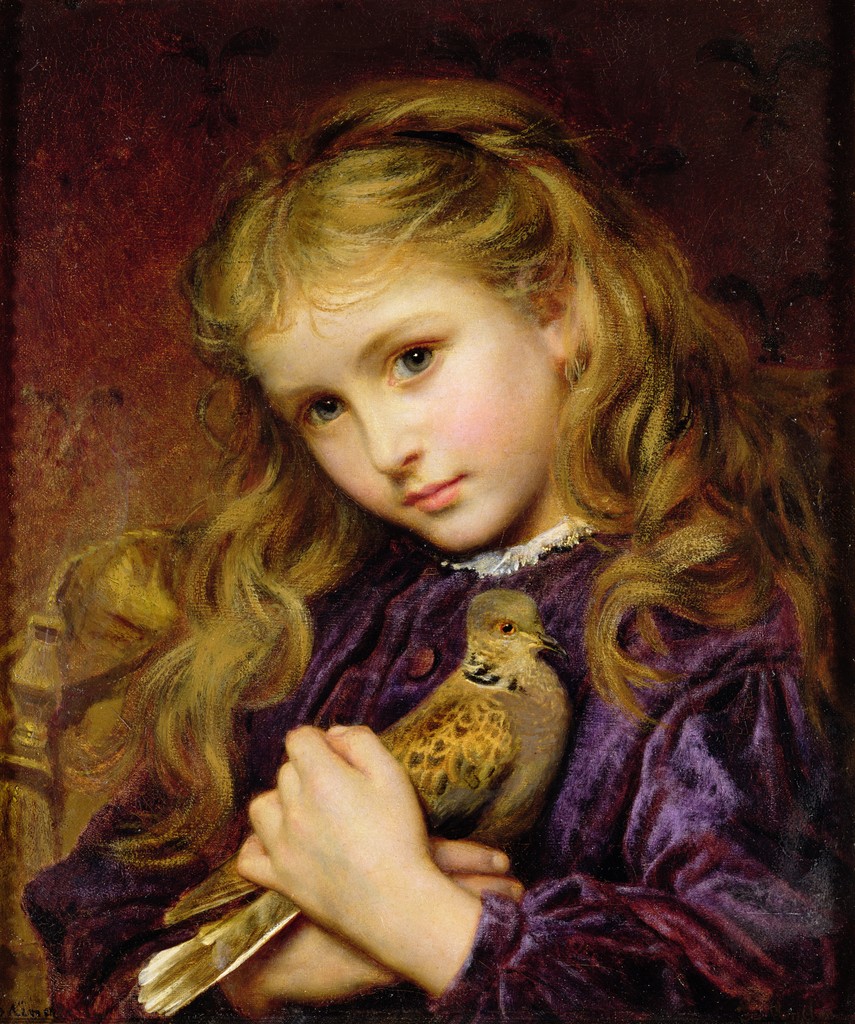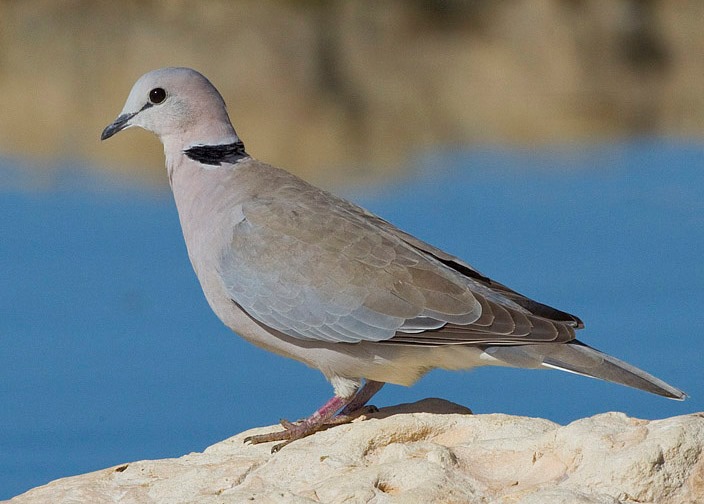|
Streptopelia
''Streptopelia'' is a genus of birds in the pigeon and dove family Columbidae. These are mainly slim, small to medium-sized species. The upperparts tend to be pale brown and the underparts are often a shade of pink. Many have a characteristic black-and-white patch on the neck and monotonous cooing songs. The heartland of this genus is Africa, but several species occur in tropical South Asia. As a group, this genus is highly successful; many species are abundant in a range of habitats in the tropics and two now have a much more extensive distribution. The Eurasian collared dove (''Streptopelia decaocto'') naturally expanded out of its original range of the warmer temperate regions from southeastern Europe to Japan to colonise the rest of Europe, reaching as far west as Great Britain by 1960 and Ireland soon after. It has also been introduced into the U.S. and, as of 1999, it had been reported from 22 states and was still spreading rapidly. Taxonomy The genus ''Streptopelia'' was i ... [...More Info...] [...Related Items...] OR: [Wikipedia] [Google] [Baidu] |
Eurasian Collared Dove
The Eurasian collared dove (''Streptopelia decaocto'') is a dove species native to Europe and Asia; it was introduced to Japan, North America and islands in the Caribbean. Because of its vast global range and increasing population trend, it has been listed as Least Concern on the IUCN Red List since 2014. Taxonomy ''Columba decaocto'' was the scientific name proposed by the Hungarian naturalist Imre Frivaldszky in 1838 who described a Eurasian collared dove. The type locality is Plovdiv in Bulgaria. It is now placed in genus ''Streptopelia'' that was introduced in 1855 by the French ornithologist Charles Lucien Bonaparte. The Burmese collared dove (''S. xanthocycla'') was formerly considered a subspecies of the Eurasian collared dove, but was split as a distinct species by the IOC in 2021. Two other subspecies were formerly sometimes accepted, ''S. d. stoliczkae'' from Turkestan in central Asia and ''S. d. intercedens'' from southern India and Sri Lanka. They are now consi ... [...More Info...] [...Related Items...] OR: [Wikipedia] [Google] [Baidu] |
Streptopelia Decaocto
The Eurasian collared dove (''Streptopelia decaocto'') is a dove species native to Europe and Asia; it was introduced to Japan, North America and islands in the Caribbean. Because of its vast global range and increasing population trend, it has been listed as Least Concern on the IUCN Red List since 2014. Taxonomy ''Columba decaocto'' was the scientific name proposed by the Hungarian naturalist Imre Frivaldszky in 1838 who described a Eurasian collared dove. The type locality is Plovdiv in Bulgaria. It is now placed in genus ''Streptopelia'' that was introduced in 1855 by the French ornithologist Charles Lucien Bonaparte. The Burmese collared dove (''S. xanthocycla'') was formerly considered a subspecies of the Eurasian collared dove, but was split as a distinct species by the IOC in 2021. Two other subspecies were formerly sometimes accepted, ''S. d. stoliczkae'' from Turkestan in central Asia and ''S. d. intercedens'' from southern India and Sri Lanka. They are now co ... [...More Info...] [...Related Items...] OR: [Wikipedia] [Google] [Baidu] |
Streptopelia Turtur
The European turtle dove (''Streptopelia turtur'') is a member of the bird family Columbidae, the doves and pigeons. It breeds over a wide area of the south western Palearctic including north Africa but migrates to northern sub-Saharan Africa to winter. Taxonomy The European turtle dove was formally described by the Swedish naturalist Carl Linnaeus in 1758 in the tenth edition of his ''Systema Naturae''. He placed it with all the other pigeons in the genus ''Columba'' and coined the binomial name ''Columba turtur''. The specific epithet ''turtur'' is the Latin word for a turtle dove. Linnaeus gave the locality as "India". This was an error and the type locality has been designated as England. The species is now placed in the genus ''Streptopelia'' that was introduced in 1855 by the French ornithologist Charles Lucien Bonaparte. Four subspecies are recognised: * European turtle dove (''S. t. turtur'') (Linnaeus, 1758) – Europe, Madeira and the Canary Islands to western Sibe ... [...More Info...] [...Related Items...] OR: [Wikipedia] [Google] [Baidu] |
European Turtle Dove
The European turtle dove (''Streptopelia turtur'') is a member of the bird family Columbidae, the doves and pigeons. It breeds over a wide area of the south western Palearctic including north Africa but migrates to northern sub-Saharan Africa to winter. Taxonomy The European turtle dove was formally described by the Swedish naturalist Carl Linnaeus in 1758 in the tenth edition of his '' Systema Naturae''. He placed it with all the other pigeons in the genus '' Columba'' and coined the binomial name ''Columba turtur''. The specific epithet ''turtur'' is the Latin word for a turtle dove. Linnaeus gave the locality as "India". This was an error and the type locality has been designated as England. The species is now placed in the genus ''Streptopelia'' that was introduced in 1855 by the French ornithologist Charles Lucien Bonaparte. Four subspecies are recognised: * European turtle dove (''S. t. turtur'') (Linnaeus, 1758) – Europe, Madeira and the Canary Islands to weste ... [...More Info...] [...Related Items...] OR: [Wikipedia] [Google] [Baidu] |
Spotted Dove
The spotted dove (''Spilopelia chinensis'') is a small and somewhat long-tailed pigeon that is a common resident breeding bird across its native range on the Indian subcontinent and in Southeast Asia. The species has been introduced to many parts of the world and feral populations have become established. This species was formerly included in the genus ''Streptopelia'' with other turtle-doves, but studies suggest that they differ from typical members of that genus. This dove is long tailed buff brown with a white-spotted black collar patch on the back and sides of the neck. The tail tips are white and the wing coverts have light buff spots. There are considerable plumage variations across populations within its wide range. The species is found in light forests and gardens as well as in urban areas. They fly from the ground with an explosive flutter and will sometimes glide down to a perch. It is also called the mountain dove, pearl-necked dove, lace-necked dove, and spotted turtl ... [...More Info...] [...Related Items...] OR: [Wikipedia] [Google] [Baidu] |
Laughing Dove
The laughing dove (''Spilopelia senegalensis'') is a small pigeon that is a resident breeder in Africa, the Middle East, South Asia, and Western Australia where it has established itself in the wild after being released from Perth Zoo in 1898. This small long-tailed dove is found in dry scrub and semi-desert habitats where pairs can often be seen feeding on the ground. It is closely related to the spotted dove (''Spilopelia chinensis'') which is distinguished by a white and black chequered necklace. Other names include laughing turtle dove, palm dove and Senegal dove while in Asia the name of the little brown dove is often used. Taxonomy In 1760 the French zoologist Mathurin Jacques Brisson included a description of the laughing dove in his six volume ''Ornithologie'' based on a specimen collected in Senegal. He used the French name ''La tourterelle à gorge tachetée du Sénégal'' and the Latin ''Tutur gutture maculato senegalensis''. The two stars (**) at the start of the secti ... [...More Info...] [...Related Items...] OR: [Wikipedia] [Google] [Baidu] |
Spilopelia
''Spilopelia'' is a genus of doves that are closely related to ''Streptopelia'', yet distinguished from them by differences in morphology and behavior. Some authors have argued that ''Stigmatopelia'' is the valid name as it appears in an earlier line although also erected by the Swedish zoologist Carl Sundevall, but Richard Schodde and Ian J. Mason in their zoological catalogue of Australian birds chose ''Spilopelia'' citing clause 24(b) of the International Code of Zoological Nomenclature (ICZN) which supports the decision of the first reviser. The name ''Spilopelia'' combines the Ancient Greek ''spilos'' meaning "spot" and ''peleia'' meaning "dove". Species The genus includes just two species: * Spotted dove, ''Spilopelia chinensis'' * Laughing dove The laughing dove (''Spilopelia senegalensis'') is a small pigeon that is a resident breeder in Africa, the Middle East, South Asia, and Western Australia where it has established itself in the wild after being released from ... [...More Info...] [...Related Items...] OR: [Wikipedia] [Google] [Baidu] |
Streptopelia Capicola
The ring-necked dove (''Streptopelia capicola''), also known as the Cape turtle dove or half-collared dove, is a widespread and often abundant dove species in East and southern Africa. It is a mostly sedentary bird, found in a variety of open habitats. Within range, its penetrating and rhythmic, three-syllabled crooning is a familiar sound at any time of the year. Its name is derived from the semi-collar of black feathers on the lower nape, a feature shared with a number of ''Streptopelia'' species. Like all doves, they depend on surface water. They congregate in large flocks at waterholes in dry regions to drink and bathe. Description Their body feathers are darkest on the upper side, where they are coloured in dull tones of grey and brown, with shades of lavender on the nape. It is paler below, where a tint of pinkish lavender is usually present. The lower belly and crissum (the undertail coverts surrounding the cloaca) is white. As with related species, they have white fringe ... [...More Info...] [...Related Items...] OR: [Wikipedia] [Google] [Baidu] |
Streptopelia Decipiens
The mourning collared dove or African mourning dove (''Streptopelia decipiens'') is a dove which is a widespread resident breeding bird in Africa south of the Sahara. Despite its name, it is not related to the North American mourning dove (''Zenaida macroura''). This species is common or abundant near water. They often mingle peacefully with other doves. Description The mourning collared dove is a largish, stocky pigeon, up to 31 cm in length. Its back, wings and tail are pale brown. The head is grey and the underparts are pink, shading to pale grey on the belly. There is a black hind neck patch edged with white. The legs and a patch of bare skin around the eye are red. When flying, it shows blackish flight feathers and extensive white in the tail, the latter being a distinction from the similar but larger red-eyed dove. The call is a fast ''krrrrrrrr, oo-OO, oo''. Sexes are similar, but immatures are duller than adults, and have scalloping on the body feathers. Africa ... [...More Info...] [...Related Items...] OR: [Wikipedia] [Google] [Baidu] |
Barbary Dove
The Barbary dove, ringed turtle dove, ringneck dove, ring-necked turtle dove, or ring dove (''Streptopelia risoria'') is a domestic member of the dove and pigeon family (Columbidae). Although the Barbary dove is normally assigned its own systematic name, as ''Streptopelia risoria'', considerable doubt exists as to its appropriate classification. Some sources assert confidently that it is a domesticated form of the Eurasian collared dove (''Streptopelia decaocto''), but the majority of evidence points to it being a domesticated form of the African collared dove (''Streptopelia roseogrisea''). It appears that it can hybridize freely with either species, and its status as a species must therefore be regarded as doubtful. However, because of the wide use of both the common and systematic names, it is best to consider it separately from either of the putative parent species. Their time of domestication is also uncertain. While Linnaeus described them in 1756, they may have been impo ... [...More Info...] [...Related Items...] OR: [Wikipedia] [Google] [Baidu] |
Streptopelia Semitorquata
The red-eyed dove (''Streptopelia semitorquata'') is a dove that is a widespread and common in Sub-Saharan Africa. It has been listed as Least Concern on the IUCN Red List since 2004. Taxonomy The red-eyed dove was formally described by the German naturalist Eduard Rüppell in 1835 from birds seen in the Taranta Mountains of Eritrea. He coined the binomial name ''Columba semitorquata''. The specific epithet is combines the Latin ''semi-'' meaning "half-" or "small" and ''torquatus'' meaning "collared". The species is monotypic: no subspecies are recognised. Description The red-eyed dove is a largish, stocky pigeon, typically 30 cm (12 inches) in length. Its back, wings and tail are pale brown. When flying, it shows blackish flight feathers. The head and underparts are dark vinous-pink, shading to pale grey on the face. There is a black hind neck patch edged with white. The legs and a patch of bare skin around the eye are red. The call is a loud ''doo-doo-du-du''. Sexes a ... [...More Info...] [...Related Items...] OR: [Wikipedia] [Google] [Baidu] |
Streptopelia Roseogrisea
The African collared dove (''Streptopelia roseogrisea'') is a small dove found in the Sahel, northern parts of the Horn of Africa and southwestern Arabia. Although it lives in arid lands, it is found around water sources. This bird is typically around in length. Its upper body, from shoulders to tail, is a pale grayish brown, though the wing edge has a bluish tinge. Flight feathers are darker, and nearly black. Head, neck and breast are pinkish shading to white on the chin and belly. There is little sexual dimorphism. The African collared dove is the species thought to be the wild ancestor of the domestic Barbary dove, though some suggest the Eurasian collared dove (''Streptopelia decaocto'') may also have been involved. The African collared dove is able to hybridise with the Barbary dove, and it is thought that the increase in the range of colours of Barbary doves available that occurred in the later 20th century was the result of the importation of African collared doves ... [...More Info...] [...Related Items...] OR: [Wikipedia] [Google] [Baidu] |


_Photograph_by_Shantanu_Kuveskar.jpg)




